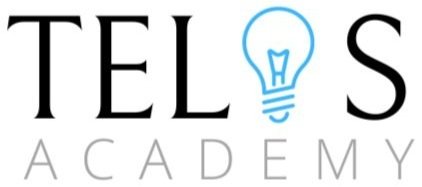
GRADES 3-6
LOWER LEVEL
ACADEMICS
FALL 2025 SPECIAL PRICING
GRADES 3-6 can enjoy a ONE YEAR ONLY offer of Half Price tuition ($995) and waIved REGISTRATION fees.
Email Beth Seeberger at lowerlevel@telosonedayacademy.com to enroll today.
Classes Start August 19.
2025-2026
LOWER LEVEL (ELEMENTARY) CURRICULUM
We believe the foundation of a child’s education shapes their entire life. Our classical approach is designed to cultivate wonder, strengthen character, and nurture a lifelong love of learning from the very beginning.
Rooted in a Christ-centered worldview, our program introduces young learners to truth, goodness, and beauty through rich literature, language, history, music, nature study, and hands-on discovery. We focus on training minds and shaping hearts—developing not just what students know, but who they are becoming.
Classical education in the elementary years emphasizes mastery of foundational skills, especially in reading, writing, and arithmetic, while capitalizing on a child’s natural curiosity and capacity for memorization. Using time-tested methods such as narration, recitation, and Socratic questioning, we equip students with the tools of learning that will serve them for a lifetime. At TELOS, our goal is to cultivate wisdom and virtue from the earliest years—laying a joyful, God-honoring foundation that prepares children to think deeply, live faithfully, and grow in their love for the Lord and His world. *Note, There may be small changes to the following curricula.
At TELOS LOWER LEVELS, classes are broken into the following segments: 3, 4-5, 6.
MEMORY WORK
CYCLE 1—Clarita’s Publishing
MATHEMATICS
At Telos, students will be taught the fundamental skills using their grade’s scope in sequence listed below. This will provide parents the flexibility to purchase their preferred curriculum. To facilitate choosing the correct curriculum for your child, the following resources are available:
-
Multiplication and division facts (0-10)
Understand multiplication as equal groups
Understand division as sharing/grouping
Use multiplication/division to solve word problems
Properties of operations (commutative, associative, distributive)
Arithmetic patterns and relationships
Fractions as parts of a whole (numerator/denominator)
Compare fractions with same numerator or denominator
Tell time to the minute
Measure and estimate liquid volumes and masses
Understand area and perimeter
Organize and interpret data with scaled graphs
-
Multi-digit multiplication (up to 4 digits × 1 digit)
Multi-digit division (up to 4-digit dividends)
Place value understanding to 1,000,000
Equivalent fractions and comparing fractions
Add/subtract fractions with like denominators
Multiply fractions by whole numbers
Understand decimal notation for fractions (tenths, hundredths)
Measure angles with protractors
Classify shapes by properties (parallel sides, angles)
Apply area and perimeter formulas
Analyze and create line plots with fractions
-
Decimal operations (all four operations to hundredths)
Multi-digit multiplication and division (up to 4-digit ÷ 2-digit)
Add/subtract fractions with unlike denominators
Multiply fractions by whole numbers and fractions
Divide unit fractions by whole numbers and vice versa
Volume concepts and formulas (rectangular prisms)
Coordinate graphing (first quadrant)
Interpret and evaluate expressions with brackets/parentheses
Classify two-dimensional figures by properties
-
Ratios, rates, and percentages
Divide fractions by fractions
Introduction to negative numbers
Coordinate graphing (all four quadrants)
Write and solve one-step equations and inequalities
Variables in expressions and equations
Area of triangles and polygons
Surface area using nets
Statistical concepts (mean, median, mode, range)
Data distribution and representation (histograms, box plots)
HISTORY
GRADES 3-6—STORY OF THE WORLD VOL 4
GRAMMAR
GRADES 3-4—IEW Fix It Grammar Level 2: Town Mouse, Country Mouse
GRADES 5-6—IEW Fix It Grammar Level 3: Robin Hood
WRITING
GRADES 3—IEW Adventures in Writing
GRADES 4-5 (each student will go to the one they are most prepared for
GRADES 6—IEW Ancient History Based Writing
LITERATURE
GRADES 3
Charlette’s Web, Dangerous Journey, Farmer Boy, Homer Price
GRADES 4–5
The Trojan War, Dangerous Journey, Farmer Boy, The Magician's Nephew
GRADES 6
The Trojan War, The Bronze Bow, The Secret Garden, The Magician’s Nephew
RESOURCES
The links above are to the original creators website. Often used or sale items are available on other sites. Be careful of getting student books used as they may already be written in.
NATURAL PHILOSOPHY (SCIENCE)
GRADES 3-6—Science in the Beginning (Dr. Jay Wile)

